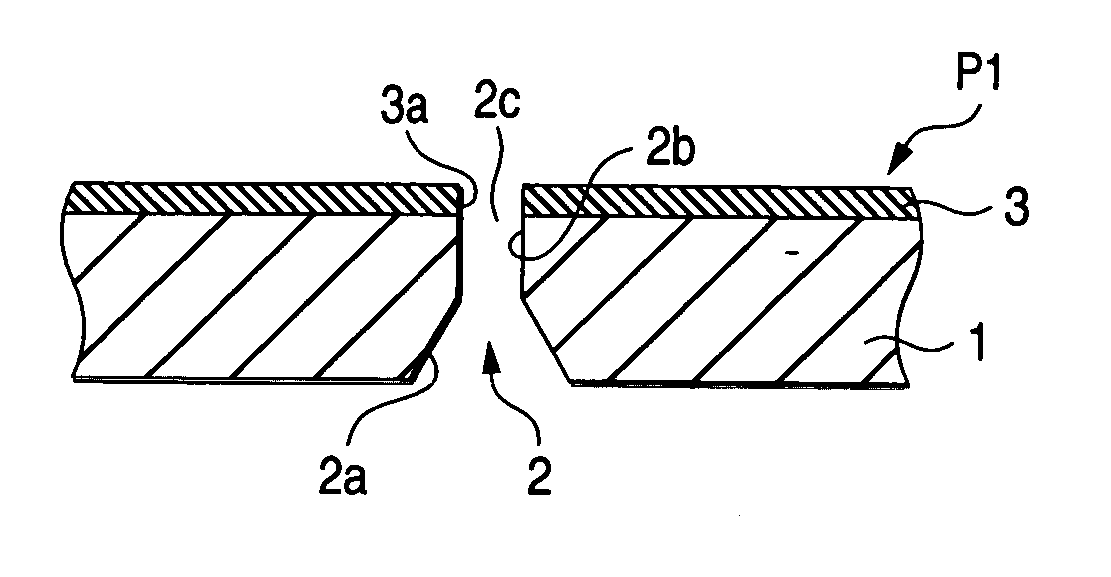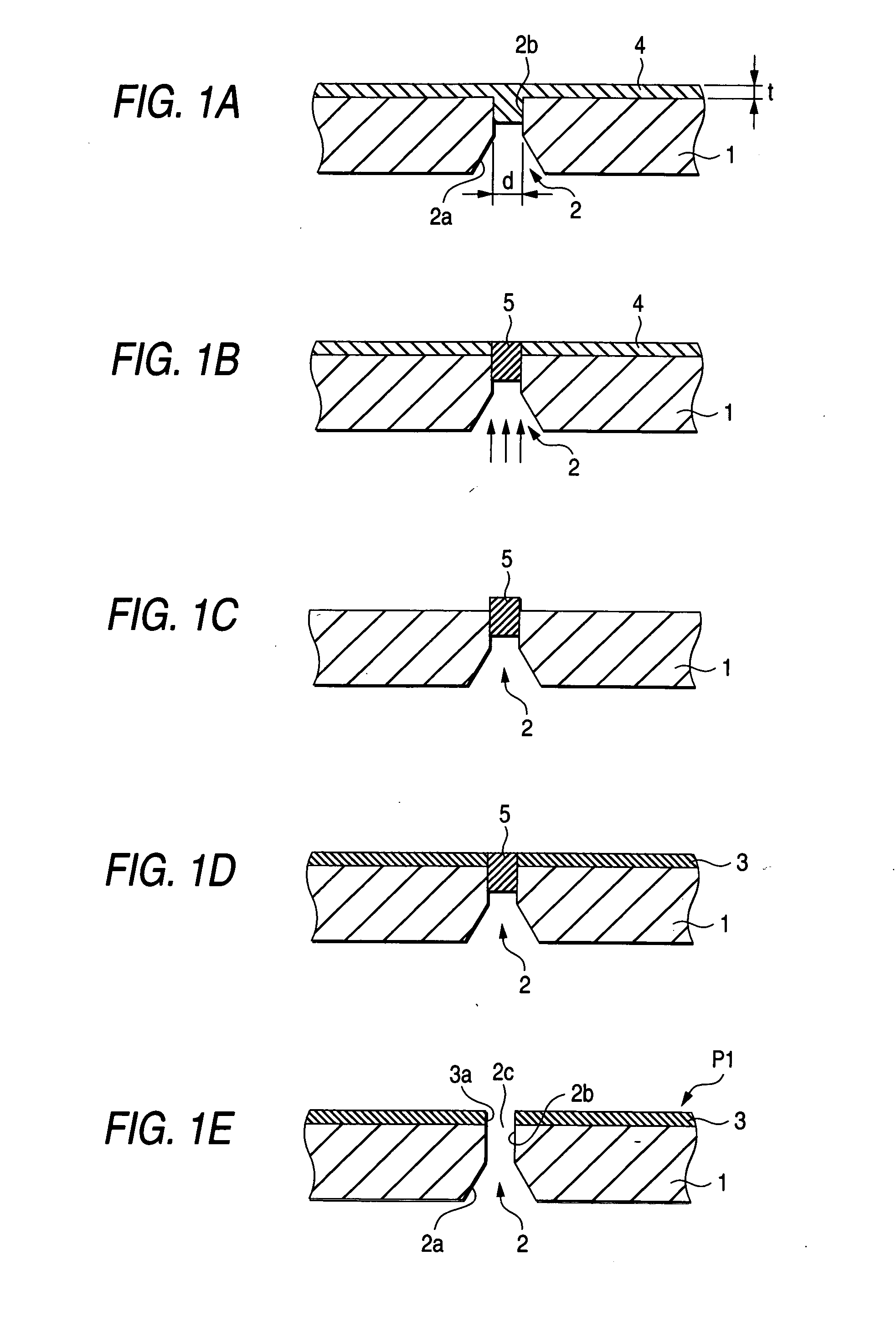Methods for producing a nozzle plate and nozzle plate
a technology of nozzle plate and nozzle plate, which is applied in the direction of printing, photomechanical treatment, instruments, etc., can solve the problems of inability to produce film, inability inability to reduce the amount of projection due to the overhanging of the water-repellent film, so as to prevent ink leakage, improve the water-repellent neighbor of the nozzle ejection port, and reduce the amount of projection
- Summary
- Abstract
- Description
- Claims
- Application Information
AI Technical Summary
Benefits of technology
Problems solved by technology
Method used
Image
Examples
first embodiment
[First Embodiment]
A first embodiment of the invention will be described. In the first embodiment, the invention is applied to a nozzle plate, which is to be disposed in an ink jet head and includes a nozzle for ejecting ink. Hereinafter, the first embodiment will be described with reference to FIG. 1.
First, a nozzle plate P1 will be briefly described. As shown in FIG. 1E, the nozzle plate P1 includes: a nozzle 2 which is formed in a substrate 1, and from which ink is to be ejected; and a water-repellent film 3 which is formed on the surface (the face on the ink ejection side) of the substrate 1. The substrate 1 is formed of a sheet of a metal (for example, stainless steel), and has a thickness of, for example, about 70 μm. The nozzle 2 has: a taper portion 2a which is formed on the side of the rear face of the substrate 1 and is more tapered as further advancing toward the surface; and a straight portion 2b which elongates from the taper portion 2a to the surface of the substrate...
example 1
The above-described methods of producing a nozzle plate were checked by the following method. A nozzle including a ejection port having an inner diameter of 20 μm was formed in a substrate made of SUS430 having a thickness of 75 μm. Then, a photocuring resin film was pressure bonded to the surface of the substrate at a pressure of 0.2 MPa (about 2 kg / cm2) under the state where the film was heated to 70° C. In the pressure bonding of the photocuring resin film, a roller is moved at movement velocity 1 m / min twice to apply the pressure of 0.2 MPa to the surface of the substrate. As the photocuring resin film, Ohdil (dry film photoresist) FP215 (glass transition point Tg: an initiating temperature of 65° C. and an ending temperature of 95° C.) produced by TOKYO OHKA KOGYO CO., LTD. was used. The thickness thereof was 15 μm. The photocuring resin film was substantially hardened by an exposure amount of 100 mJ / cm2. Under this state, light irradiation was conducted while changing the exp...
second embodiment
Next, a second embodiment of the invention will be described. The portions which are similarly configured as those of the first embodiment are denoted by the same reference numerals, and their description is adequately omitted. Hereinafter, description will be made with reference to FIG. 5.
First, a nozzle plate P3 will be briefly described. As shown in FIG. 5F, the nozzle plate P3 includes: a nozzle 2 which is formed in a substrate 1, and from which ink is to be ejected; and a water-repellent film 3 which is formed on the surface (the face on the ink ejection side) of the substrate 1. On a rear side of the substrate 1, a flat polished surface 6 is formed.
Next, a method for producing the nozzle plate P3 will be described. First, as shown in FIG. 5A, a surface polishing process is applied to all over the rear surface side of the substrate 1 to form the polished surface 6 (see an arrow in FIG. 5A: a polishing step). When the taper portion 2a of the nozzle 2 is formed by a process ...
PUM
 Login to View More
Login to View More Abstract
Description
Claims
Application Information
 Login to View More
Login to View More - R&D
- Intellectual Property
- Life Sciences
- Materials
- Tech Scout
- Unparalleled Data Quality
- Higher Quality Content
- 60% Fewer Hallucinations
Browse by: Latest US Patents, China's latest patents, Technical Efficacy Thesaurus, Application Domain, Technology Topic, Popular Technical Reports.
© 2025 PatSnap. All rights reserved.Legal|Privacy policy|Modern Slavery Act Transparency Statement|Sitemap|About US| Contact US: help@patsnap.com



